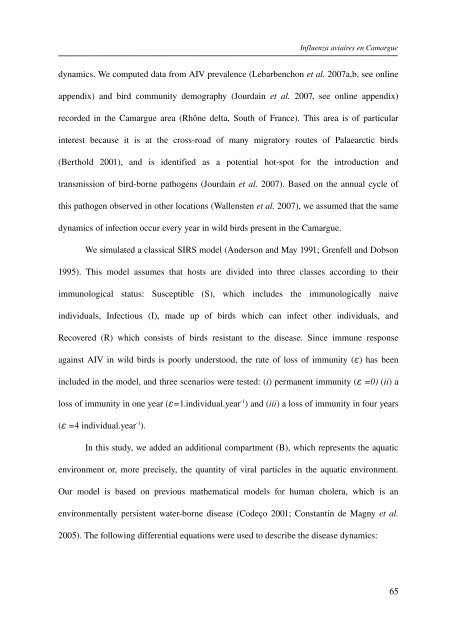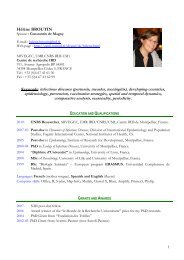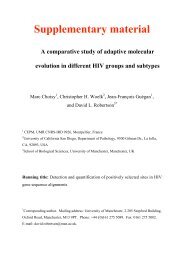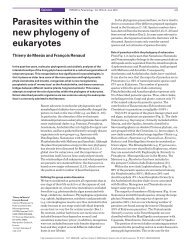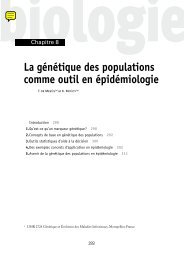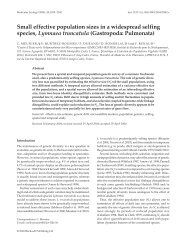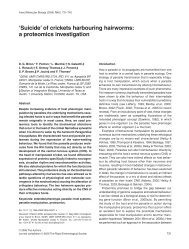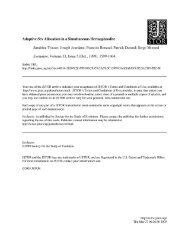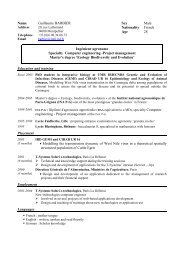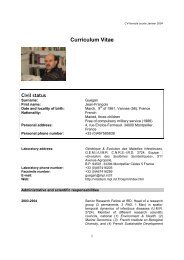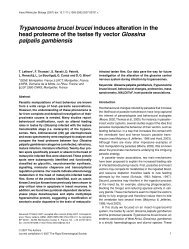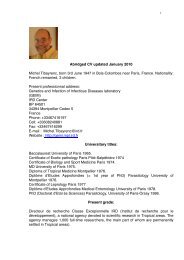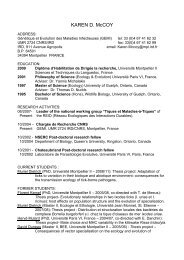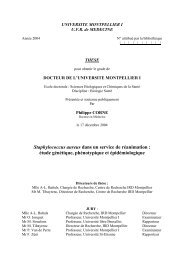écologie des virus influenza aviaires en Camargue - IRD
écologie des virus influenza aviaires en Camargue - IRD
écologie des virus influenza aviaires en Camargue - IRD
You also want an ePaper? Increase the reach of your titles
YUMPU automatically turns print PDFs into web optimized ePapers that Google loves.
Influ<strong>en</strong>za <strong>aviaires</strong> <strong>en</strong> <strong>Camargue</strong>dynamics. We computed data from AIV preval<strong>en</strong>ce (Lebarb<strong>en</strong>chon et al. 2007a,b, see onlineapp<strong>en</strong>dix) and bird community demography (Jourdain et al. 2007, see online app<strong>en</strong>dix)recorded in the <strong>Camargue</strong> area (Rhône delta, South of France). This area is of particularinterest because it is at the crossroad of many migratory routes of Palaearctic birds(Berthold 2001), and is id<strong>en</strong>tified as a pot<strong>en</strong>tial hotspot for the introduction andtransmission of birdborne pathog<strong>en</strong>s (Jourdain et al. 2007). Based on the annual cycle ofthis pathog<strong>en</strong> observed in other locations (Wall<strong>en</strong>st<strong>en</strong> et al. 2007), we assumed that the samedynamics of infection occur every year in wild birds pres<strong>en</strong>t in the <strong>Camargue</strong>.We simulated a classical SIRS model (Anderson and May 1991; Gr<strong>en</strong>fell and Dobson1995). This model assumes that hosts are divided into three classes according to theirimmunological status: Susceptible (S), which inclu<strong>des</strong> the immunologically naiveindividuals, Infectious (I), made up of birds which can infect other individuals, andRecovered (R) which consists of birds resistant to the disease. Since immune responseagainst AIV in wild birds is poorly understood, the rate of loss of immunity (ε) has be<strong>en</strong>included in the model, and three sc<strong>en</strong>arios were tested: (i) perman<strong>en</strong>t immunity ( ε =0) (ii) aloss of immunity in one year ( ε=1.individual.year 1 ) and (iii) a loss of immunity in four years( ε = 4 individual.year 1 ).In this study, we added an additional compartm<strong>en</strong>t (B), which repres<strong>en</strong>ts the aquatic<strong>en</strong>vironm<strong>en</strong>t or, more precisely, the quantity of viral particles in the aquatic <strong>en</strong>vironm<strong>en</strong>t.Our model is based on previous mathematical models for human cholera, which is an<strong>en</strong>vironm<strong>en</strong>tally persist<strong>en</strong>t waterborne disease (Codeço 2001; Constantin de Magny et al.2005). The following differ<strong>en</strong>tial equations were used to <strong>des</strong>cribe the disease dynamics:65


